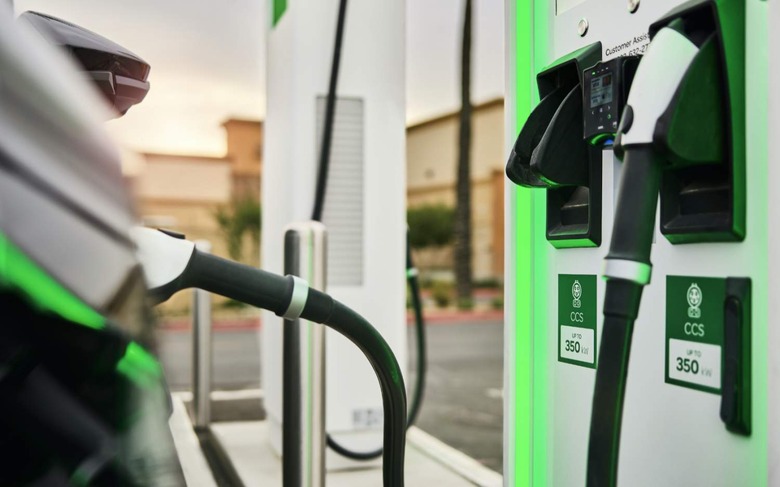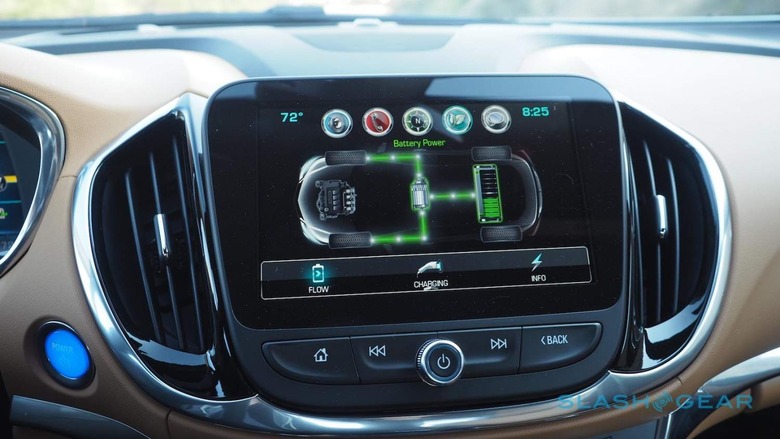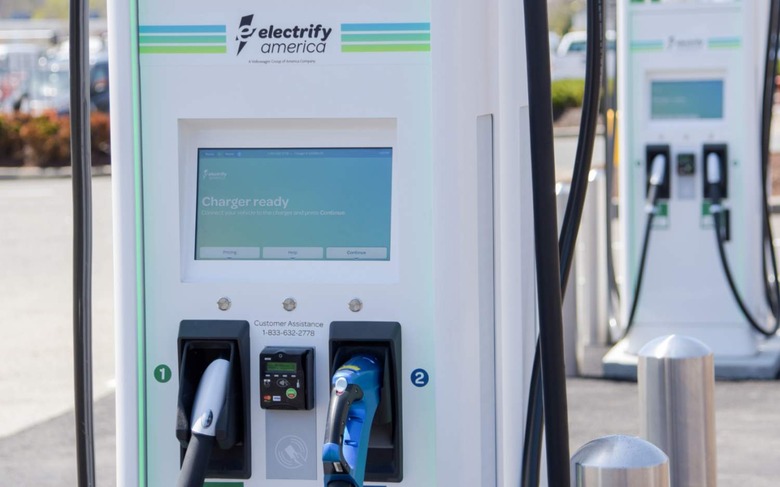There's A Huge EV Hole And I'm In It
Electric vehicles are the future. At least, that's what automakers, regulators, and EV enthusiasts keep telling us, but though I'm a fan of electrification I'm still frustrated. In fact, I'm on a countdown to making a tough electric decision, and it's one that has left me scratching my head about the EVs on offer today, not to mention just how well they actually fit with the lifestyles of potential buyers.
I love electric vehicles, but I recognize that it often takes first-hand experience in order to understand the charm. Once you've driven one, for example, it's difficult to forget that flood of instantaneous torque as soon as your foot grazes the accelerator. Even BEVs meant primarily for urban jaunts can usually best even the more powerful internal combustion cars, at least for that initial spurt away from a stop light.
Actually trying that out from behind the wheel is usually sufficient to clear up any misconceptions that electric must also mean slow. It's not to say that just driving an EV will make an instant convert, mind. After all, that's usually where the dual specters of range and charging arise.
They're collectively the perennial problem the auto industry faces. On the one hand, drivers typically over-estimate just how much electric range they really need. That leads to outlandish demands for how far an EV would need to be able to drive, on a single charge, before it could be "practical" for them to make the switch from a gas vehicle.

For charging, meanwhile, though it's typically the uncertainty of EV charger locations in the wild that gets mentioned, there are also issues around doing so when at home or at work. The stats from current electrified vehicle drivers show that, overwhelmingly, most recharge their car while it's parked at home or at their workplace. It's a reality that has led to suggestions that public infrastructure isn't quite as necessary as some have thought, and that better communication about recharging patterns could help assuage concerns far more rapidly.
The truth, of course, is that for many – particularly those in urban areas, those who lack a garage or dedicated parking space, or those who rent and can't install 240V Level 2 chargers for the fastest speeds – the absence of home charging is a dealbreaker to begin with. They don't even get to be included within that statistical cohort analyzed by their charging behaviors, because they know from the get-go that a battery-electric vehicle simply won't fit their lifestyle.
We already have one solution for the transition to electric
The irony is that the auto industry has had a compelling fix for that for years now, but it seems to be progressively withering on the vine. Plug-in hybrid electric vehicles, or PHEVs, combine combustion engines with battery-electric functionality. They can usually drive for some distance on electric-only power, and then the gas engine kicks in to keep you moving even when the battery is flat.
Different companies have different approaches to exactly how that handover works. In some PHEVs, for example, the gas engine can independently drive the wheels just like the electric motors can; in others, the gas engine acts more like a generator, providing power for the electric motor and topping up the battery with any excess juice.

Either way, though, the reassurance is the same. You get the ability to drive on electric power alone, but also the backup of knowing that extra range is just a gas station away.
As compromises go, I think it's a compelling one for those who don't quite fit the fully-electric lifestyle. Indeed, it's a compromise I'm personally familiar with, since for the past few years we've leased a second-gen Chevrolet Volt PHEV. For most of our time with the Volt, we only had access to a 110V outlet in our (rented) home, which meant a full charge took some time.
For the bulk of our use, the Volt's roughly 53 miles of electric-only range was enough for what we needed. However the fact that we could also have a full gas tank as backup, should we unexpectedly have to drive more, was the reassurance that made an electrified vehicle work for us and our charging constraints. During our years with the Volt it's probably been driven 80+ percent of the time on electric power alone, but being liberated from having to hunt down a faster charger to urgently top up the battery meant we never needed to consider a second, gas-only car for emergencies or similar.
Plug-in hybrids are stuck in reverse
Despite our overwhelmingly positive experience with the Volt, the auto industry as a whole seems to have fallen out of love with PHEVs. Our lease is up later this year, and though we've since moved and now have access to a Level 2 charger that's much faster, the idea of having the best of both gas and electric worlds still holds appeal. Problem is, the current plug-in hybrid segment is looking fairly underwhelming.
There are about 30 different PHEVs on sale in the US at the moment. They run the gamut from the cheapest Hyundai IONIQ PHEV, starting at about $25k, though to exotics like the Polestar 1, at about $165k. In-between there are options from both mainstream brands like Toyota, Chrysler, and Kia, and more luxury fare from BMW, Mercedes, and Volvo.
Only two, though, are rated with more electric-only range than our 2018 Volt. That's the Polestar 1, at 65 miles, and the $145k Karma Revero GT, at 61 miles. Much as I enjoyed driving the Polestar, a six-figure grand touring coupe isn't quite an alternative for our considerably more affordable Chevy.
The more direct competition, though, would come with some serious electric compromises. That Hyundai IONIQ PHEV, for example, is rated for just 29 miles, while a $27k Toyota Prius Prime clocks in at 25 miles. In fact the 30 mile mark seems to be about the average these days, falling well short of the sort of range our Volt manages (and which, frankly, it typically exceeds in day to day use).
The closest I could get without selling off all my organs first would be a Honda Clarity PHEV, at 47 miles and just north of $33k. Now the Clarity is a decent car, but it's not exactly new at this point, and I can't help but feel like we'd be going backwards not forward.
EVs may be ready, but drivers are not
Clearly, the auto industry would like me to cut my remaining ties to gasoline and embrace full electrification. Quite probably that's what we'll end up doing, perhaps with one of Chevrolet's refreshed Bolt models like the new Bolt EUV. All the same, I'm very aware that having the flexibility to rip off that band-aid only comes from our current life circumstances.
Having moved to the suburbs, we now have a garage to park in and a Level 2 charger. Since I usually have at least one car hanging around that I'm reviewing, the fear of being reliant on electric power alone is tempered too. In short, I can accommodate the compromises an EV demands of you.

Plenty of people don't have that luxury. While plans are afoot to dramatically increase the number of EV fast-charging stations in the US – so as, in part, to alleviate the need to recharge at home – it's still going to be years before that makes a meaningful difference. You need to do plenty of homework if you're hoping to rely on nearby DC fast chargers to keep your electric vehicle running day to day.
I can't help but suspect that leaves a not-inconsiderable number of people who would drive an electrified vehicle, if they could, but who simply aren't in a position to rely on an electric-only vehicle. People, quite frankly, like us: for whom a PHEV with reasonable – say, 50+ miles – electric range will do the trick on an average day, but who won't be left stranded if they have nowhere to charge, or only a slow 110V outlet to access.
It's a group that the auto industry has apparently forgotten about, or decided it can safely ignore, and though I'm biased I do think that's short-sighted. For everyone who agrees that electric transportation is the future, there are still people who believe that but aren't ready to live it today. Without a competitive PHEV they're more than likely to end up in a car or SUV that isn't electrified at all, even if – like me – they'd really rather it be otherwise.
